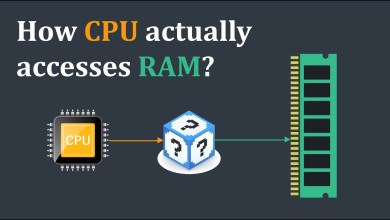Demikernel, Power11, and Terahertz Breakthroughs 🚀
See more at
Microsoft’s ongoing development of Demikernel, a library OS for kernel-bypass I/O, is gaining traction in the tech world. This project aims to significantly improve networked application performance by allowing direct hardware access, bypassing traditional kernel overhead. For developers working on high-performance distributed systems, this could mean substantial latency reductions and throughput improvements. It’s worth keeping an eye on Demikernel’s progress, as it might become a game-changer for certain types of networked applications.
In the realm of virtualization, IBM’s Power11 CPUs are set to support nested virtualization in Linux 6.13. This addition enables KVM nested guest support, opening up new possibilities for complex virtualization setups. For those managing large-scale cloud environments or working on virtualization technologies, this feature could provide more flexibility in resource allocation and isolation strategies. It’s a significant step forward for Power architecture users who require advanced virtualization capabilities.
Shifting gears to wireless communication, a new world record has been set for terahertz transmission over a 1 kilometer distance. This breakthrough demonstrates the potential for ultra-high bandwidth applications using terahertz waves. While still in the experimental stage, this technology could eventually lead to wireless links with fiber-optic-like capacities. For network engineers and those working on next-gen communication systems, this development suggests exciting possibilities for future high-bandwidth, low-latency wireless networks.
MIT researchers are pushing the boundaries of transistor technology with nanoscale 3D transistors made from ultrathin semiconductor materials. These innovations promise more efficient electronics by leveraging quantum effects to overcome silicon’s limitations. For hardware engineers and those involved in chip design, this research points to potential paths for continuing Moore’s Law beyond current silicon constraints. It’s crucial to monitor these advancements as they could reshape the landscape of computing hardware in the coming years.
In the data center space, Eviden has unveiled a quad NVIDIA ConnectX-7 module, targeting high-bandwidth, low-latency networking applications. This module is particularly relevant for HPC and data-intensive workloads. System architects working on large-scale computing environments should take note, as this type of hardware can significantly impact overall system performance and efficiency in data-heavy applications.
Google is making moves to integrate its Gemini AI assistant more deeply into Android apps. A new “app functions” API in Android 16 may allow Gemini to interact directly with app functionality. For Android developers, this could open up new possibilities for AI-enhanced features and user interactions. It’s worth considering how this capability might be leveraged in your own apps to provide more intelligent and context-aware experiences.
On the venture capital front, Sequoia Capital’s 2020 flagship fund has seen a 24.6% markup in the 12 months ending June 2024, reaching a total value of $808 million without any exits. This performance, amidst a challenging economic environment, underscores the potential resilience of well-managed VC portfolios. For startup founders and those involved in the tech investment ecosystem, this data point provides valuable context on the current state of venture funding.
A recent legal decision has Samsung facing a $118 million penalty for infringing on Netlist’s DRAM patents. This case highlights the ongoing importance of intellectual property in the tech industry, particularly in hardware development. It serves as a reminder for tech companies to conduct thorough IP due diligence and maintain robust patent strategies to mitigate such risks.
Lastly, U.S. Cyber Command has reported that Chinese hackers are positioning themselves within IT networks of critical infrastructure. This information is crucial for cybersecurity professionals and those responsible for protecting sensitive systems. It emphasizes the need for heightened vigilance, robust security measures, and continuous monitoring of potential threats, especially in critical sectors.
[ad_2]
source



